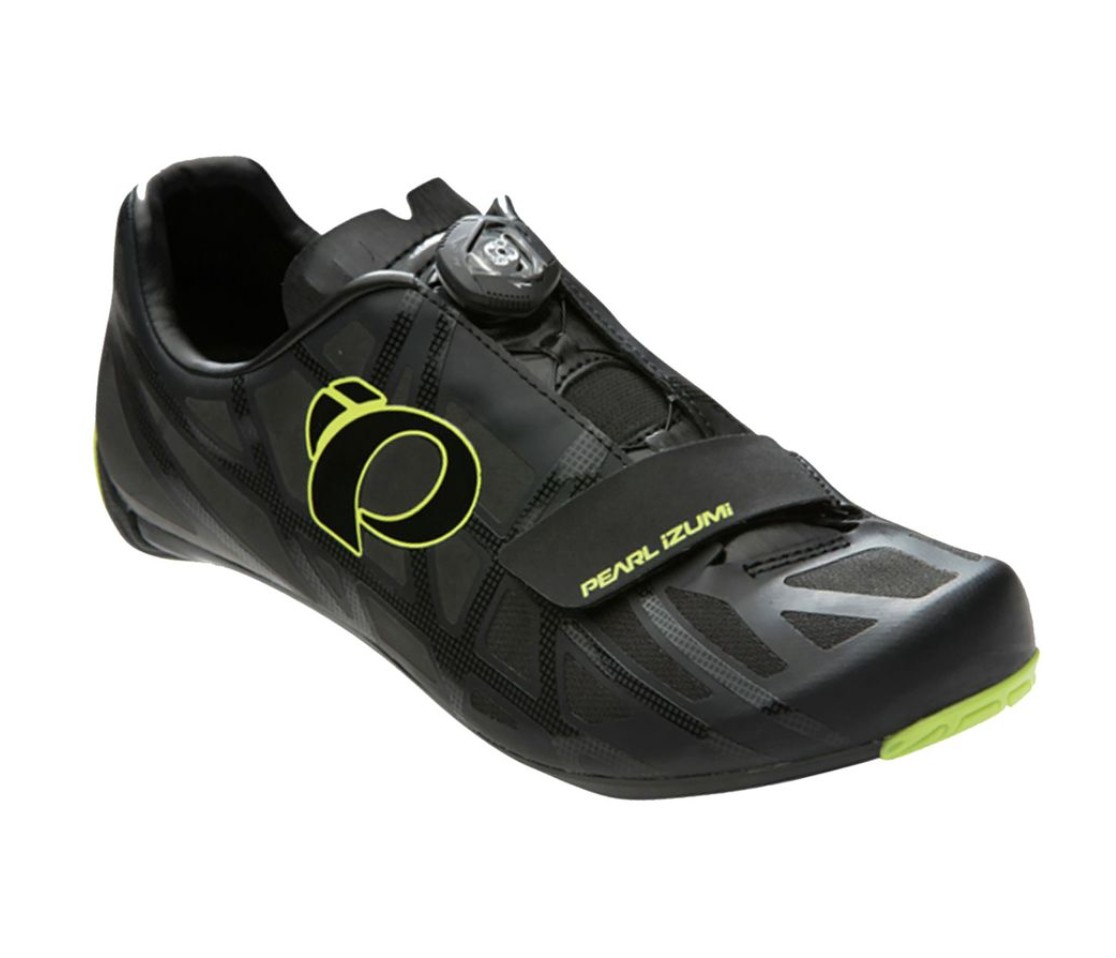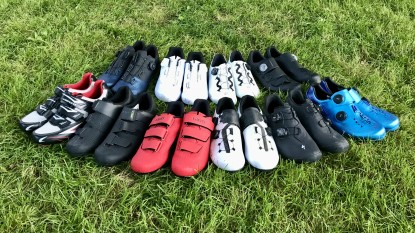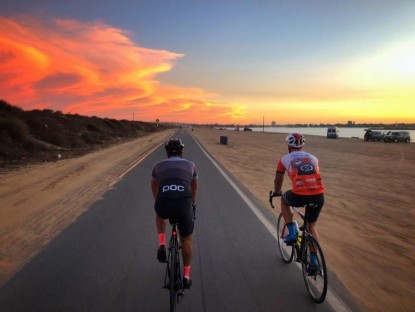Pearl Izumi Race Road IV Review
Our Verdict
Our Analysis and Test Results
These relatively accessible kicks ended up faring average in our lineup. We think they will do the job just fine for most entry-level riders looking to break into the sport without dropping a ton of cash right out of the gate. They had an interesting mix of affordable materials, like rubber, and high-end lightweight materials, like carbon fiber, to give just a bit of an edge. The result? One of the lightest shoes out there. We had a good time in them, and we think a lot of new riders will like them too. Read on to see how they did against the rest of the pack.
Performance Comparison
Comfort
As entry-level shoes, these kicks are fairly utilitarian - no extra padding or anything exceptional, but they do have a well-sculpted footbed that helps the foot meld into the shoe. They also use a seamless upper that reduces hot spots and rubbing.
Some of the more comfortable shoes were the Fi'zi:k R5B Uomo Boa, which won our Best Buy Award and the Shimano S-Phyre, which won our Top Pick for Lightweight. Both shoes have supple, well-fitting uppers, and better padding.
Weight
The Izumis do well in this category, coming in among the lightest at just 20.5 ounces in men's 44. This is owed in no small part to their super thin upper and stripped down outsole. Of course, the tradeoff here is in durability and power transfer.
Shoes that were both light and balanced durability and power transfer were notably more expensive. The Giro Empire ACC was the lightest shoe we reviewed and did somewhat better in power and durability, but is about $100 more. The best balancer of weight with strength and durability is the Shimano S-Phyre, but know that you'll plunk down considerably more for the premium featherweight shoe.
Power Transfer
For a typical entry-level shoe, these do just fine. Their nylon and plastic sole flex quite a bit, but the carbon fiber plate in the forefoot mitigates that to a significant degree. The other concern is the wide, loose heel that causes slippage and saps away precious watts. This isn't so much a problem on flats and sitting in the saddle, but when it comes time to sprint or climb, the slipping (and the sole flex) become pretty apparent.
The Fi'zi:ks offer a stiffer sole and a better fit that minimizes heel slippage, so they're a good alternative for a comparable price. But if you want to increase power transfer you need to dig a little deeper into your pockets and look at something like the Shimano S-Phyre with its impressive pro-level performance at a much more accessible price point.
Adjustability
At first glance, their use of a single Boa dial and toe strap would seem comparable to the Fi'zi:ks. Their dial is anchored in six places, so tightening is much more taxing on the dial, particularly because two anchors pull the tongue up toward the dial instead of just pulling the sides of the upper inward. This causes the dial the strip and immediately release if tightened too much. Furthermore, because the two sides of the upper are so far apart, it causes the wearer to want to tighten it more while the Fi'zi:ks barely require any work from the dials to tighten the upper down into a good fit.
Take a look at the Fi'zi:ks for an entry level shoe that does a great job with adjustability. If you think you might want even more, it might be worth looking at a premium shoe like the Shimano S-Phyre.
Durability
One of the best design features is the 3D seamless print upper that reduces the risk of stitching tears and degradation. They also use a carbon fiber insert in the forefoot to increase durability. Their extremely thin upper is mostly comprised of rubber and plastic with just a dash of mesh. It's not hard to imagine a stray kick or snag causing a puncture or tear with these. The biggest consideration is the mostly nylon and plastic outsole with their large vents. Much like the concern over the Mavic Cosmic Ultimate II, which left enough room for rocks and gravel to poke through the mesh screen.
There's also concern that the plastic could become brittle after enough use. We recommend looking at studier models like Fi'zi:k R5Bs or even the mid-level Lake CX237.
Best Applications
They come with two and three hole designs and could easily cross over between road, mountain, commuter, and spin. They might not be the best touring shoes because they don't have the desired comfort, but they would certainly work.
Value
At $150, there are superior shoes like the Fi'zi:k R5Bs that would deliver much more comfort and better performance for longer.
Conclusion
These kicks combine some interesting design aspects and materials to come up with a serviceable entry level shoe that you can tear apart and not feel too bad about. They will serve you well in your callow exploits as you learn and pick the sport up. But if you're already past that level and ready for a nicer shoe that you don't intend to abuse, we gave you a handful of great alternatives in each of the measure discussions above.









